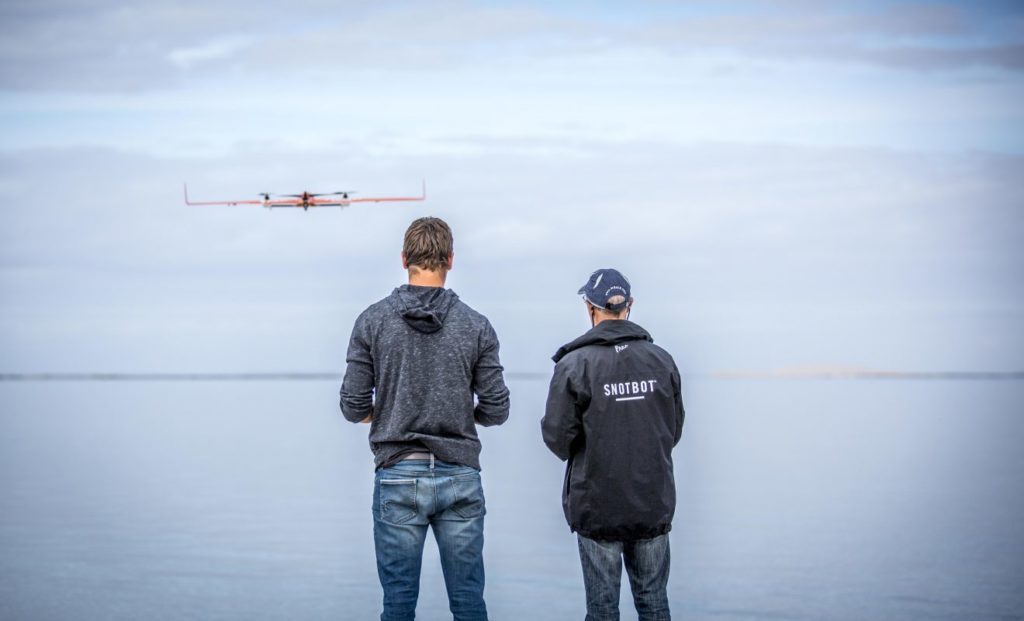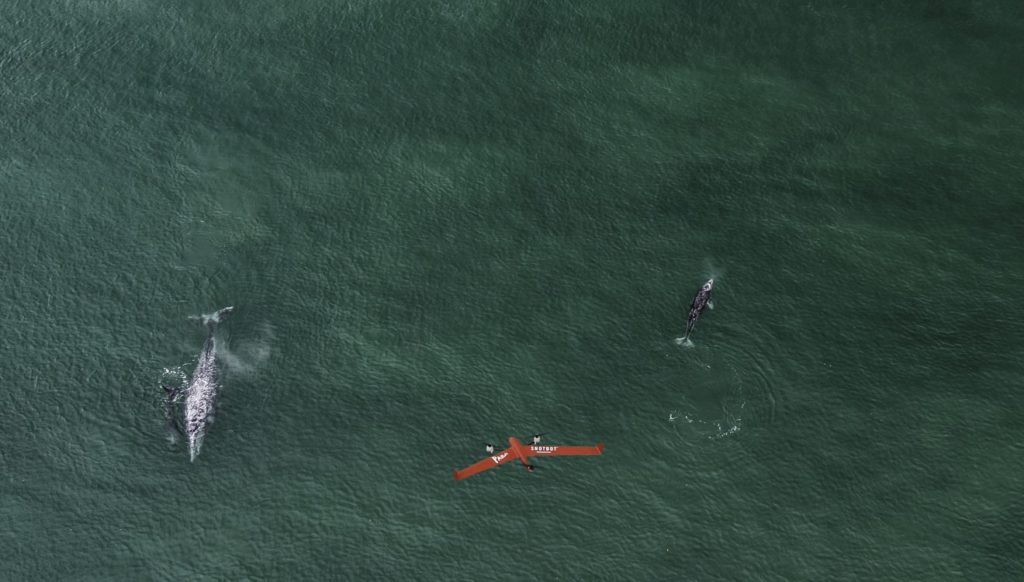Our friends at Ocean Alliance have been pioneering the use of drones for marine research for quite some time. But until very recently, those drones were essentially off-the-shelf quadcopters, modified to be flying Petri dishes capable of collecting whale snot without disturbing the animals.
These flying ‘SnotBots’ gather biological data that gives researchers an insight into the health of individual whales and their habitats. They also make gathering data cheaper, easier and safer.
We’ve highlighted Ocean Alliance’s work in the past for two reasons. Apart from being a unique and inspiring application of drone technology, the charity has also partnered with some of the industry’s big hitters. They worked with DJI to take the SnotBot program to the next level, which you can read about in more detail here. And last year the Ocean Alliance team went one step further, partnering with Intel to combine drones and machine learning to identify whales in the big blue in almost real-time.
Moving on from multi-rotor drones
There’s no doubt that regular drones have proved a valuable tool to the Ocean Alliance team. However, just like on land, multi-rotors have their limitations when it comes to data collection. For flying through whale snot over relatively short distances, there’s nothing better. Quadcopters are nimble, easy to control and relatively inexpensive.
But the Ocean Alliance team has bigger data gathering ambitions. That’s where fixed-wing drones come into the picture. Earlier this year, the team worked with fixed-wing drone specialists FlightWave Aero in Loreto, Mexico, to explore how a more versatile drone could take Ocean Alliance’s research to greater heights.
“To date, all of our drones have been multicopters: drones that hover on engine power alone and do not use any of their surfaces (like a wing) for lift in flight,” explained Ocean Alliance’s Iain Kerr.
“Alternatively, the FlightWave Edge is an innovative vertical take-off and landing fixed-wing drone that transitions into regular flight after take-off and as a consequence can stay aloft far longer and cover more ground. So, our mission on a remote peninsula in Baja was to put a fixed-wing drone, in this case, the FlightWave Edge, through its paces.”

Using drones for whale distribution surveys
The Edge is, according to FlightWave Aero, a “hybrid tricopter fixed-wing aircraft system”. The main thing you need to know is that it can take off and lands from anywhere, before seamlessly transitioning from VTOL to horizontal flight.
With the SnotBot – more often than not an adapted DJI drone – Ker said, Ocean Alliance has “been comprehensively sampling individual animals in a population. The question we have always had when we are analyzing the data is what percentage of the group did we sample? To date we have not had enough data to answer that question.”
That’s where a hybrid drone comes in handy, as Kerr explains:
Distribution/abundance surveys (when we survey an area and count how many whales there are in an area and how they are spread across this area) are highly valuable data sets. Researchers can gain an accurate snapshot of how many animals are in a specific location, how they are spread across this area, and crucially how this distribution changes over time: across multiple time scales: hours, days, weeks, seasons and even years. Currently this work is done with people with cameras on boats (which is arduous, time consuming and expensive) or from airplanes (which are expensive, dangerous and noisy).
The idea was to put the Edge UAS through its paces to see how much data it could gather on local whale populations from above. The Edge was sent on a number of missions to test its range and mission planning software. All in all, the concept of using fixed-wing drones to gather population data passed “with flying colors”.
Ocean Alliance expects to be using the technology for future expeditions.

Malek Murison is a freelance writer and editor with a passion for tech trends and innovation. He handles product reviews, major releases and keeps an eye on the enthusiast market for DroneLife.
Email Malek
Twitter:@malekmurison
Subscribe to DroneLife here.







[…] Our friends at Ocean Alliance have been pioneering the use of drones for marine research for quite some time. But until very recently, those drones were essentially off-the-shelf quadcopters, modified to be flying Petri dishes capable of collecting whale snot without disturbing the animals. These flying ‘SnotBots’ gather biological data that gives researchers an insight […] The post Ocean Alliance and FlightWave Aero Trial Fixed-Wing Drone for Whale Research appeared first on DRONELIFE. <bSee Original Article […]